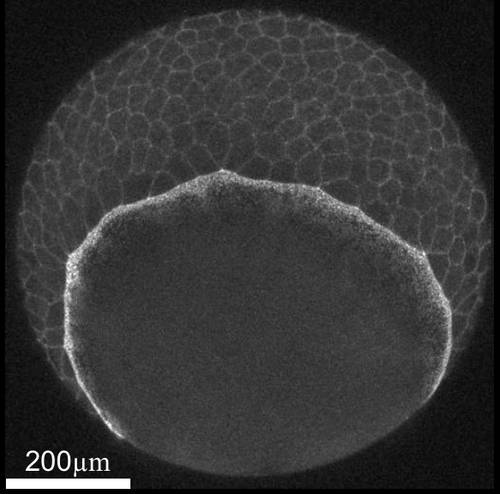
During gastrulation in zebrafish, the enveloping cell layer (EVL) spreads over the yolk cell – almost like a hat that you put over your head. This movement is driven by a contractile ring of the proteins actin and myosin - so far, the ring was thought to function by circumferential contraction only, like a simple purse-string. Researchers at the MPI-CBG and MPI-PKS, together with their colleagues at the IST Austria, now showed that the movement is also driven by a flow-friction mechanism.
This mechanism generates a pulling force through resistance against retrograde actomyosin flow - the actomyosin ring contracts also along its width. Further experiments showed that the flow-friction mechanism is sufficient for the spreading of the cell layer. Thus, actomyosin rings can function in epithelial morphogenesis through a combination of cable-constriction and flow-friction mechanisms. „We added a new dimension to the model“, says Stephan Grill, joint group leader at the MPI-CBG and the MPI-PKS. The findings are fundamental: „Contractile actomyosin rings drive various morphogenetic processes ranging from cytokinesis to wound healing,“ explains Guillaume Salbreux, group leader at MPI-PKS.
Martin Behrndt, Guillaume Salbreux, Pedro Campinho, Robert Hauschild, Felix Oswald, Julia Rönsch,
Stephan Grill and Carl‐Philipp Heisenberg:
Forces driving epithelial spreading in zebrafish gastrulation
Science, 12 October 2012